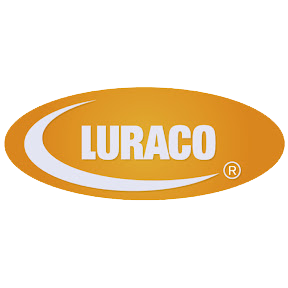Top Massage Chair Brands Based In china Brands
Here's what we recommend for:
Product Selection
4/5
Real Relax maintains a tight range of mass-market models that cover both basic and enhanced functionality. The Favor-05 caters to absolute entry-level buyers looking for the core experience, while the Favor-07 Plus introduces 3D rollers, more airbags, and added comfort elements. There are no true high-end or flagship chairs in the current catalog, and the brand does not offer niche variants (like space-saving shells or medical-registered builds). Still, the split...
Customer Support & Warranty
3.4/5
Warranty terms are limited to 3 years on the frame, 1 year on parts, and no labor coverage. Support is offered through email or Amazon chat, and response times are variable. Parts are shipped from U.S. warehouses, but users often report needing to install replacements themselves. This DIY approach is typical for the price tier, but it may be intimidating for less tech-savvy users. Extended warranty plans are generally unavailable...
Build Quality & Durability
3.6/5
Build quality is aligned with cost. The Favor-07 Plus feels more substantial, with reinforced frame sections and smoother recline mechanics, but it still uses lightweight plastics and PU leather with modest durability. The Favor-05 is more basic and may develop cosmetic or alignment issues over time with heavy use. The internal motors and rollers hold up for casual daily use but are not rated for commercial or high-frequency workloads. For...
Massage Variety
3.8/5
The Favor-07 Plus, Real Relax’s higher-tier model, includes a 3D roller system along a full-length SL-Track. While it doesn’t reach the fluidity or depth of advanced 4D chairs, the roller pressure is adequate for mild back and glute coverage. The Favor-05, by contrast, uses fixed-point S-Track rollers, which offer surface-level kneading without depth modulation. Massage techniques include kneading, tapping, and Shiatsu-like pulses, with transitions that are more mechanical than natural....

High-volume Amazon brand focused on affordability

SL-Track and 3D roller available even in mid-range

Calf and foot massage in all models

Zero Gravity recline standard across the lineup

User-friendly remotes and preset programs

Best suited for casual daily use and light recovery
All Massage Chair Brands

How to Buy a Massage Chair: The Complete Guide
Buying a massage chair is a big decision. Not just because of the cost, but because it's a long-term investment in your health, comfort, and daily routine. This guide is here to help you cut through marketing terms, understand the tech, and choose the right chair based on your real needs—not just flashy features.
Step 1: Know What You’re Buying It For
Start by asking yourself: Why do I want a massage chair?
Are you trying to relieve lower back pain? Recover from workouts? Unwind after work? Or do you just want the luxury of an at-home spa experience?
If pain relief is your top priority, look for features like strong roller pressure, deeper massage depth (3D or 4D), and heated therapy. For general relaxation, you may not need the most advanced system—something with a few auto programs, Zero Gravity recline, and gentle rollers may be enough.
You also need to consider body size. Most chairs fit people between 5’0” and 6’4”, but if you’re outside that range—or on the heavier side—look for models that explicitly support big-and-tall users. Also think about space. Many chairs need 10–12 inches behind them to recline fully, but some models slide forward as they recline, requiring as little as 2–4 inches from the wall.
Step 2: Understand Roller Technology
Rollers are the heart of every massage chair. They move up and down your spine, side to side across your back, and in some cases, even in and out for deeper pressure.
There are a few types of roller systems:
-
2D rollers move up-down and left-right. They’re found in entry-level chairs and provide a surface-level massage.
-
3D rollers add in-out motion. They press into the back, simulating deeper tissue massage. Most people looking for real relief should start here.
-
4D rollers are like 3D, but they also vary in speed and rhythm. This creates a more lifelike feel—similar to how a human hand might vary pace or pressure naturally.
If you want a chair that can really work out tight muscles or replicate a skilled therapist’s hand, 4D is the sweet spot.
Step 3: Learn the Track Types
The track is what the rollers ride along.
-
S-Track follows the natural curve of your spine from neck to tailbone. It gives good upper-body massage, especially for back and shoulder pain.
-
L-Track or SL-Track continues into the seat and under the thighs. If you want your glutes, hamstrings, or sciatic nerve areas targeted, this is what you want.
-
Flex-Track or hybrid designs allow for both decompression stretches and full-length gliding, giving the benefits of S-Track stretch with L-Track reach.
Step 4: Don’t Ignore Zero Gravity
Zero Gravity positioning reclines your body so your knees rise above your heart. This reduces spinal pressure, improves circulation, and makes the massage feel deeper.
Most modern chairs have at least one Zero-G position. Some let you cycle through two or three different angles for reading, watching TV, or full-body decompression. It's not just a gimmick—it's one of the most effective ways to make a massage feel relaxing and restorative.
Step 5: Understand the Role of Airbags and Heat
Massage chairs often come with dozens of airbags that inflate and deflate to squeeze your shoulders, arms, waist, calves, and feet.
Don’t assume more airbags is always better. It’s more important that the zones you care about (like your calves or arms) are actually covered. Calf kneading, foot rollers, and adjustable air intensity are often much more valuable than sheer airbag count.
Heat therapy is another game-changer—especially when it moves with the rollers. Static lumbar heat pads are common, but some chairs offer heated rollers or calf heaters that help loosen muscles and enhance the massage effect.
Step 6: Figure Out Which Feature Level You Need
Massage chairs are typically sold in three tiers:
-
Entry-level models come with basic 2D rollers, a few auto programs, and basic lumbar heat. They’re ideal for casual users or small apartments.
-
Mid-range models usually include 3D rollers, better coverage, 40–60 airbags, dual-zone heating, and Zero-G. This tier works for most families or daily use.
-
Flagship models offer 4D or dual-mechanism rollers, AI body scan, moving heat, touchscreen controls, and stretch programs. They’re great for athletes, chronic pain users, or tech lovers.
Step 7: Ask the Right Pre-Purchase Questions
Before you buy, make sure you:
-
Measure your floor space, including full recline clearance
-
Check if the chair fits through your doorways
-
Verify your height and weight are supported
-
Understand the warranty: how many years on parts, frame, and labor?
-
Ask if there’s in-home service or just parts shipping
-
Look for reviews from users who’ve owned it for over a year
Also, try the chair if you can—either in a showroom or via video consultation with a dealer. What looks good on paper might not feel right for your body.
Step 8: Choose Where to Buy
You can buy from a local showroom, a big-box store, or online. Each has trade-offs.
-
Showrooms let you try before you buy and often include white-glove delivery, but prices can be higher.
-
Big-box stores (like Costco) offer great return policies and seasonal deals.
-
Online retailers have the widest selection but can vary in service quality. Be sure they offer a fair return window and honor warranties.
Step 9: Match Tech to Your Goals
If you're mostly looking to unwind after work, a 2D or light 3D chair with Zero-G and heat will likely satisfy you. If you're recovering from workouts, or you sit all day and deal with back tension, look for a 3D or 4D system with calf rollers and deep glute coverage. And if you’re managing chronic pain, opt for adjustable roller pressure, multiple heat zones, and good post-sale support.
Final Thoughts
Buying a massage chair isn’t just about tech specs. It's about how the chair will fit your body, your lifestyle, and your home. Understand your goals, test the comfort, and don’t let feature overload distract you from what actually matters: how it feels when you sit in it and close your eyes. Choose a chair that gives you the peace and relief you’re looking for—and you’ll thank yourself every day you come home to it.
KEEP READING












.png)



